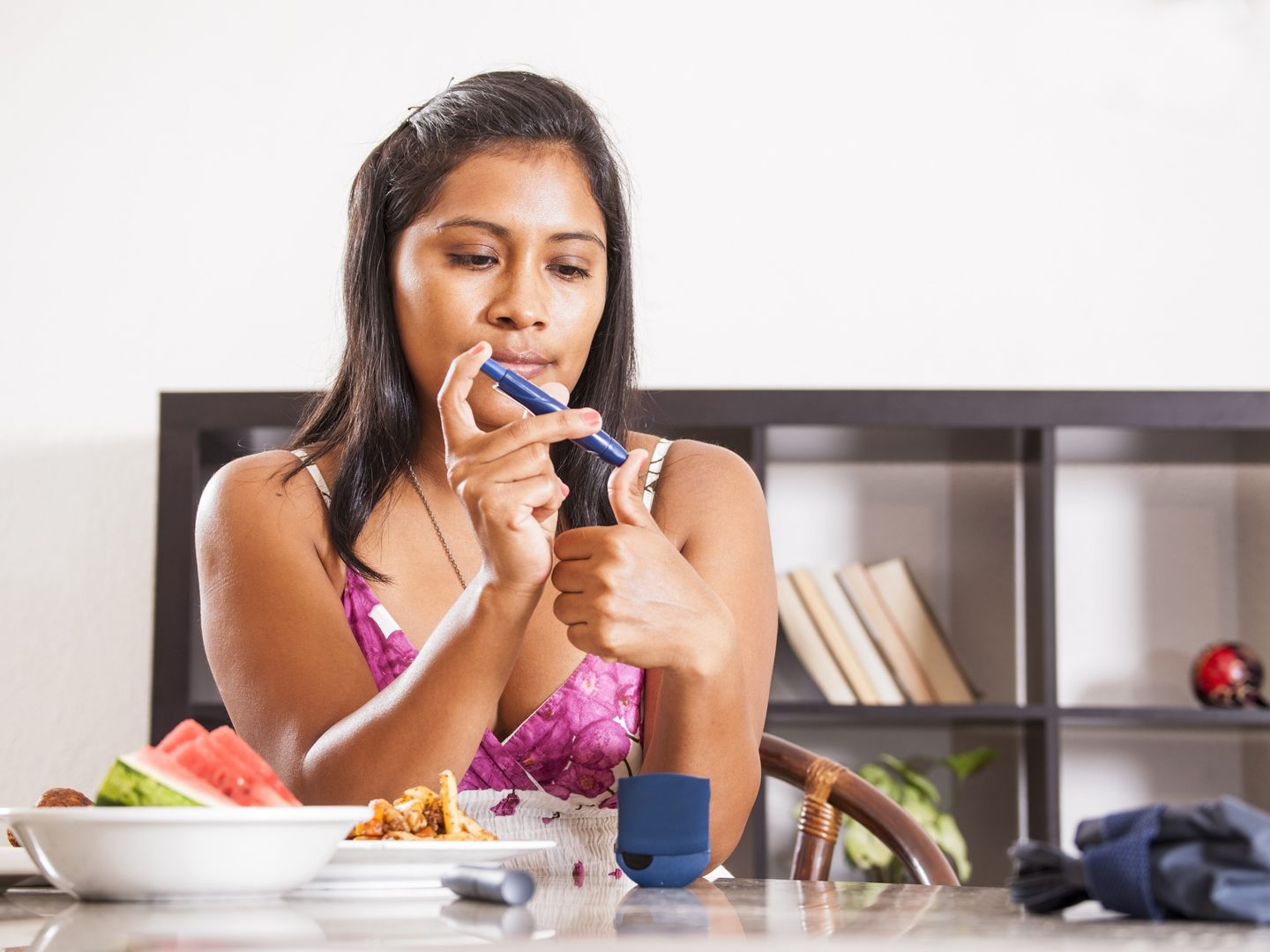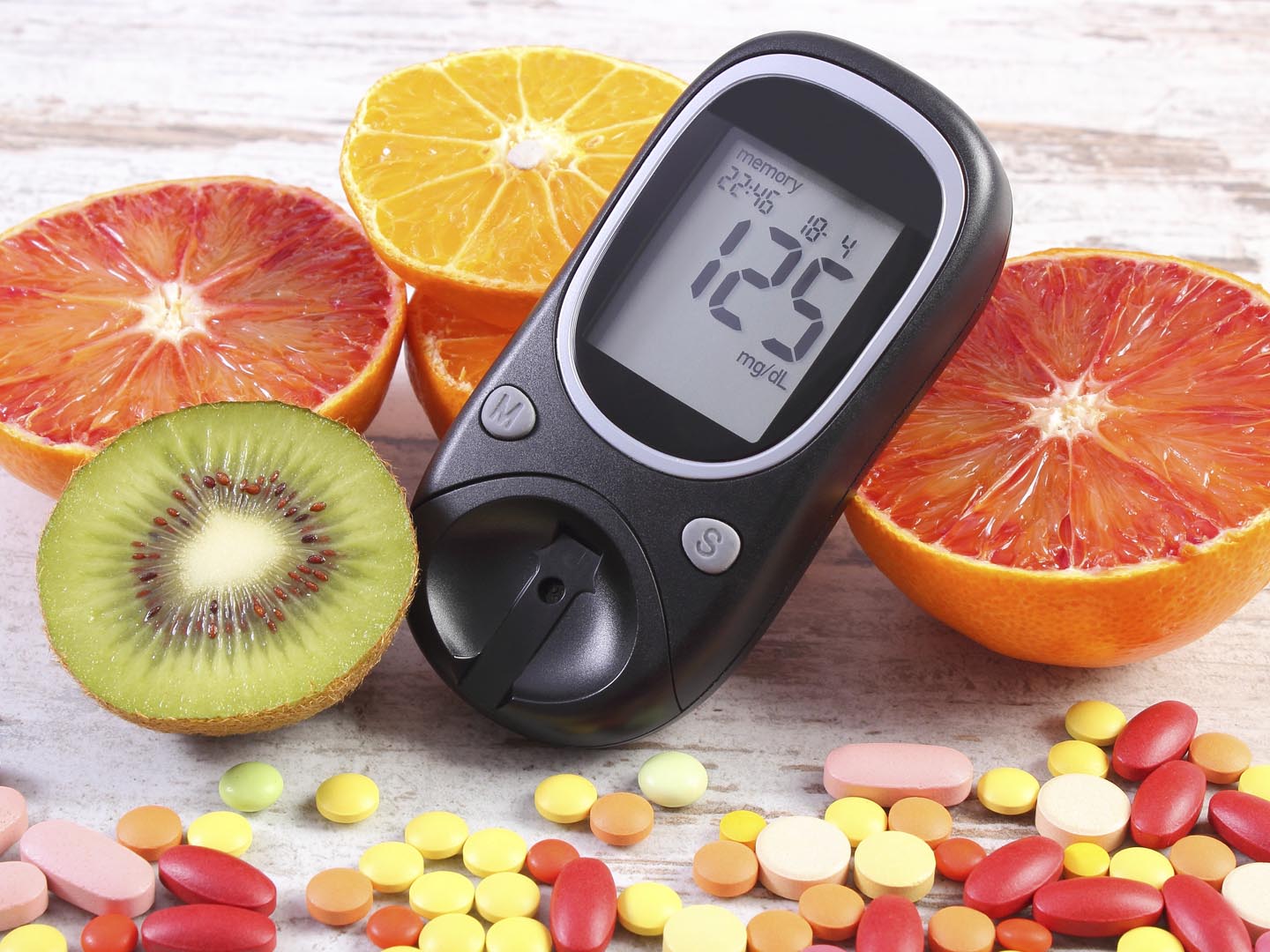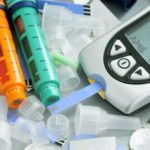Diabetes, Type 1

What is type 1 diabetes?
Type 1 diabetes is an autoimmune disorder that accounts for five to 10 percent of all cases of diabetes. It initially develops most often in children and young adults. With type 1 diabetes, the pancreas produces little or no insulin, the hormone needed to transport glucose into cells where it can be converted into energy. For this reason, if you have type 1 diabetes you will need to take insulin daily throughout your life. This form of diabetes has also been called juvenile or insulin-dependent diabetes.
What are the symptoms of type 1 diabetes?
Some of the symptoms of diabetes, such as persistent thirst or irritability, can seem relatively benign, which is one of the reasons why diagnosis may be delayed. With type 1 diabetes, however, symptoms may come on suddenly. Early detection and treatment can decrease the odds of developing the acute complications that can stem from type 1 diabetes.
Common symptoms of diabetes include:
- Frequent urination
- Excessive thirst
- Extreme hunger
- Unusual weight loss
- Increased fatigue
- Irritability
- Blurry vision
If high blood sugar levels are not brought quickly under control via treatment, acute complications of type 1 diabetes include severe dehydration and development of diabetic ketoacidosis. This is a metabolic state characterized by high concentrations of ketone bodies, which are byproducts of fatty acid breakdown, and can render the body’s tissues dangerously acidic. Symptoms of diabetic ketoacidosis include nausea, vomiting and abdominal pain, which in turn can lead to shock, coma, and even death.
Longer term complications of type 1 diabetes – which are also common to those with type 2 diabetes – include:
- Eye damage: People with diabetes have a 40 percent higher than normal risk of developing glaucoma, increased pressure within the eye that can lead to vision loss. They are also 60 percent more likely than normal to develop cataracts, which cloud the lens of the eye, blocking light and blurring vision. They are also at risk of diabetic retinopathy, damage to the retina that is the leading cause of impaired vision in the United States
- High blood pressure: This disorder occurs at twice the normal rate among diabetics.
- Heart disease: Deaths from heart disease among diabetics are two to four times that of the general population.
- Stroke: Deaths from stroke are three to five times higher than normal in people with diabetes.
- Nerve damage (neuropathy): This can affect the ability to feel heat, cold or pain in the arms and legs, but especially in the feet. Others may experience persistent tingling and discomfort. In addition, the skin on the feet can dry out and crack due to damage to nerves that control the oil and moisture. People with diabetes are also more prone than normal to calluses, ulcers and poor circulation in the feet (the ulcers and poor circulation can lead to significant complications and, in the worst of circumstances, might ultimately require amputation). Among people with diabetes, 60 to 70 percent have some degree of neuropathy.
- Kidney damage: High blood sugar can overtax the kidneys, the organs that filter waste products from the blood. As a result, over time the kidneys can lose their filtering ability, causing waste products to build up in the blood. This can lead to kidney failure. In the most extreme cases needed treatment may include dialysis or kidney transplantation. Kidney damage can be diagnosed via blood and urine tests.
- Peripheral arterial disease: Here, blood vessels are narrowed or blocked thereby reducing blood flow; this occurs especially in the lower extremities. This condition also increases the risk of heart attack and stroke.
What are the causes?
With type 1 diabetes, the body’s immune system attacks and destroys cells in the pancreas that specialize in producing insulin, the hormone needed for the transport and ultimate conversion of blood glucose into energy within cells. As a result, blood glucose levels are abnormally high, yet cells lack energy. People with type 1 diabetes need daily insulin injections to stay alive. Risks of developing the disease are higher among those who have a family history of diabetes or as the result of genetic mutation. The incidence of the disease increases with distance from the equator and is two to three times higher in Finland than it is in the United States, and 400 times higher than the incidence in Venezuela. This suggests that sub-optimal levels of vitamin D – which are common in northern populations that receive relatively low levels of solar exposure – may contribute to developing type 1 diabetes.
How is type 1 diabetes diagnosed?
One of three different blood tests can be used to diagnose type 1 diabetes:
- Glycated hemoglobin (A1C) test. A measurement of the percentage of blood sugar attached to hemoglobin, the oxygen carrying protein in red blood cells. The higher the blood glucose, the more glucose will be attached to hemoglobin. The test indicates average blood sugar levels for the past three months, with a normal HbA1c being less than 6%.
- Random blood sugar test: Here, a blood sugar level of 200 mg/dL or higher suggests diabetes in the presence of typical symptoms (see above).
- Fasting blood sugar test. Here, your blood is tested after an overnight fast. A blood sugar level that is 126 mg/dL or higher on two separate occasions indicates diabetes.
What is the conventional treatment?
With type 1 diabetes you have to take insulin daily in order to keep your blood sugar as close to normal as possible. Insulin is administered via injection using a fine needle, a pen (this looks like a pen used for writing, but is filled with insulin) or an insulin pump that connects to a catheter under the skin of the abdomen. Pumps are programmed to dispense insulin automatically, although you must reprogram it when you eat. In addition to insulin, physicians may prescribe an oral drug called Pramlintide to slow movement of food through the stomach so that the increased in blood sugar levels after meals doesn’t rise too high. Other medications that may be prescribed include angiotensin-converting enzyme (ACE) inhibitors or angiotensin II receptor blockers. Both these drugs are primarily used to lower high blood pressure, but they also can help maintain the health of the kidneys in the setting of diabetes. Cholesterol lowering drugs (statins) may be prescribed even when cholesterol isn’t high because of the elevated risk of heart disease among diabetics.
People with diabetes also must learn how to monitor blood sugar to make sure that it is consistently within the target range.
All diabetes patients are advised to eat a healthy diet that includes plenty of fruits and vegetables and to learn how to count carbohydrates to better gauge their insulin needs. Regular exercise is also recommended.
What therapies does Dr. Weil recommend for type 1 diabetes?
The goal of type 1 diabetics should be to reduce their insulin requirement to a minimum while maintaining the best possible health, especially of the cardiovascular system, through vigilant control of blood sugar levels and attention to diet, exercise and stress reduction.
Suggested lifestyle and diabetes diet changes for type 1 diabetes:
- Insulin-dependent diabetics are unlikely to be able to discontinue insulin use, and should never attempt to do so without a doctor’s oversight.
- Lose weight if you are overweight. Excess body fat causes cells to become resistant to insulin.
- Eat small, frequent meals to keep blood sugars in a healthy range. Eating large meals can flood the bloodstream with glucose. Experiment until you find an eating pattern that makes you feel your best.
- Keep refined starches and sugars to a minimum, choosing those with a low glycemic index. (Sweet potatoes, winter squash and beans are examples of better carbohydrates.) You should also be aware of glycemic load in assessing dietary choices.
- Keep trans-fats and other chemically altered fats to a minimum, but consume moderate amounts of monounsaturated oils, such as extra virgin olive oil and some nut oils.
- Eat fish several times a week, emphasizing wild, cold-water fish high in omega-3 fatty acids, such as Alaskan salmon and sardines. Or take molecularly distilled omega-3 supplements.
- Eat generous amounts of non-starchy vegetables, like cucumbers, bell peppers, dark leafy greens, zucchini, eggplant, squash, asparagus, broccoli, cabbage, Brussels sprouts, beans, radishes and spinach.
- Increase your activity level. Aerobic activity improves insulin sensitivity in muscle cells, which allows more glucose to enter the cells. Aim for 30 minutes a day.
Since type 1 and type 2 diabetics are at increased risk for a variety of complications, symptoms should be taken seriously and addressed immediately, and lifestyle changes, including dietary modification, should be initiated promptly and maintained.
Nutrition and supplements for type 1 diabetes:
In addition to the suggested dietary changes above, work with a doctor and a nutritionist to develop a personalized diet. Since insulin production, blood sugar levels, and the types of foods a diabetic eats play a significant role in the management of the disease, it is important to adhere to a healthy diet.
Research has shown that several nutrients and supplements may be helpful for people with diabetes. These include magnesium and foods rich in omega-3 fatty acids. Lower glycemic-index foods have also been shown to be helpful with blood sugar control. Try the following:
- Eat magnesium-rich foods every day. These include spinach, tofu, almonds, broccoli and lentils. Pumpkin seeds and sunflower seeds are also good sources of magnesium. Magnesium may help promote insulin production.
- Eat fish, or take molecularly distilled fish-oil supplements. Walnuts or freshly ground flaxseed are also sources of omega-3 fats, but they are utilized by the body far less efficiently than fish oils.
The following are nutrients, botanicals and other compounds that may be helpful for persons being treated for diabetes:
- Chromium. This trace element plays a role in blood sugar regulation by working with insulin to help transport glucose into cells. Take up to 1,000 micrograms of GTF chromium daily.
- Alpha lipoic acid (ALA). An antioxidant, ALA can enhance the uptake of glucose into cells and help inhibit glycosylation (the abnormal attachment of sugar to proteins, which hinders their normal functioning), as well as help promote and maintain eye health and perhaps help prevent and treat diabetic peripheral neuropathy. Start with 100 mg per day.
- Coenzyme Q10. This powerful antioxidant may help maintain a healthy heart. Take 60-100 mg of a softgel form with your largest meal.
The following botanicals may also help. Consider using them in standardized extract form and follow the dosage directions on the packages:
- Asian bitter melon (Momordica charantia)
- Ayurvedic gurmar(Gymnema sylvestre)
- Blueberry (Vaccinium myrtillus)
- Prickly-pear cactus (Opuntia spp)
Diabetics who are taking prescribed medications for any condition should let their physicians know when they’re exploring the use of these remedies.













